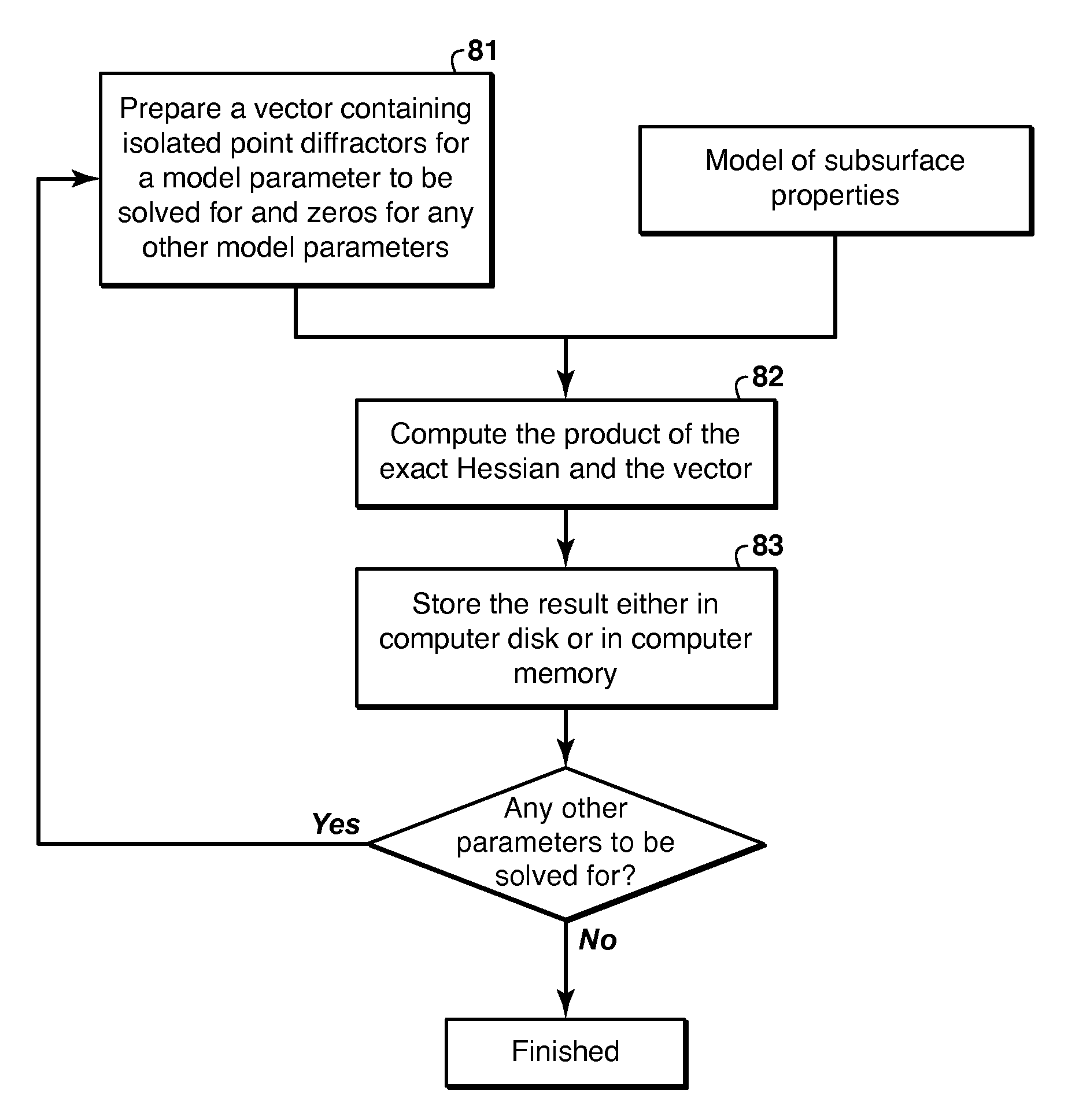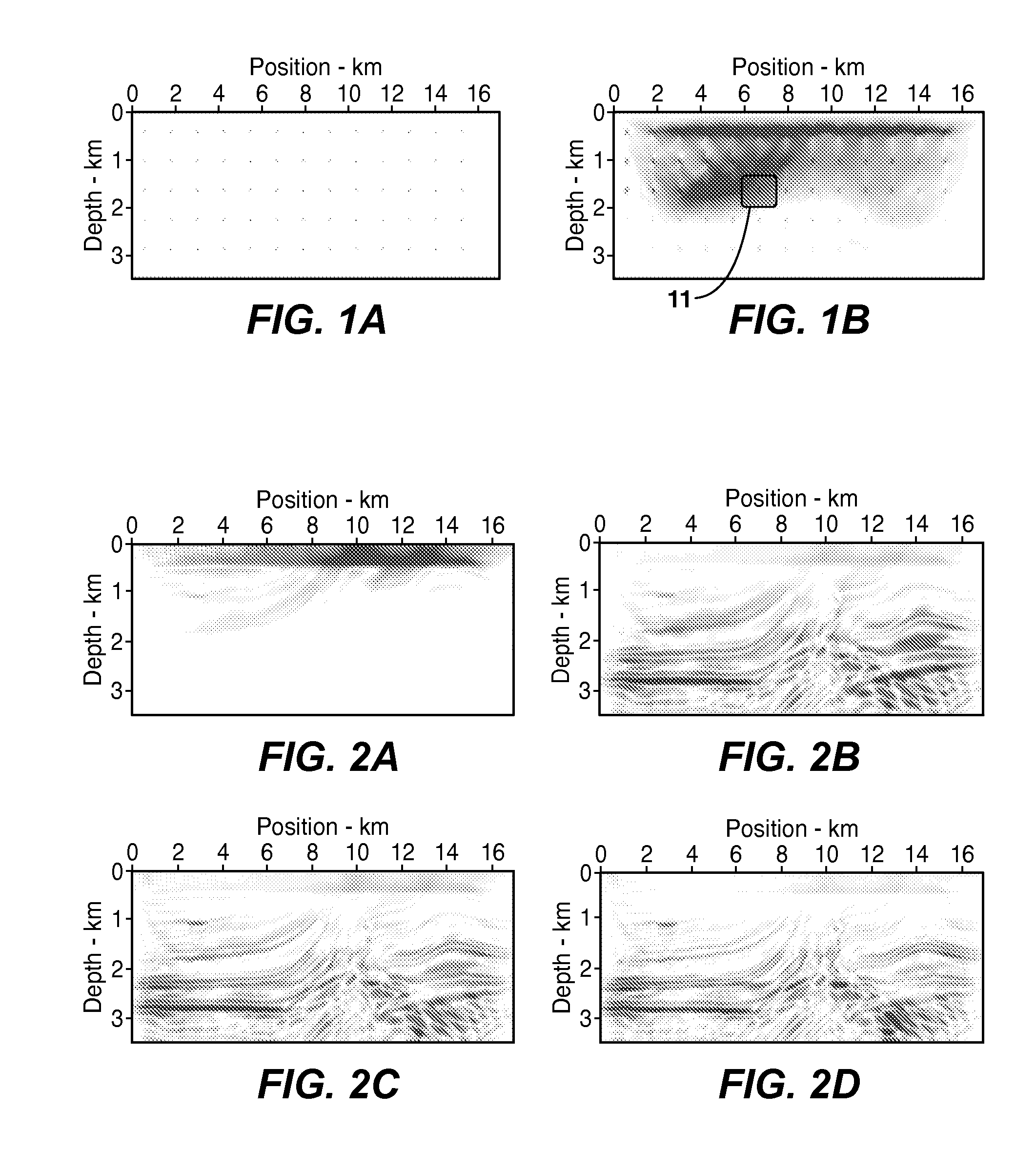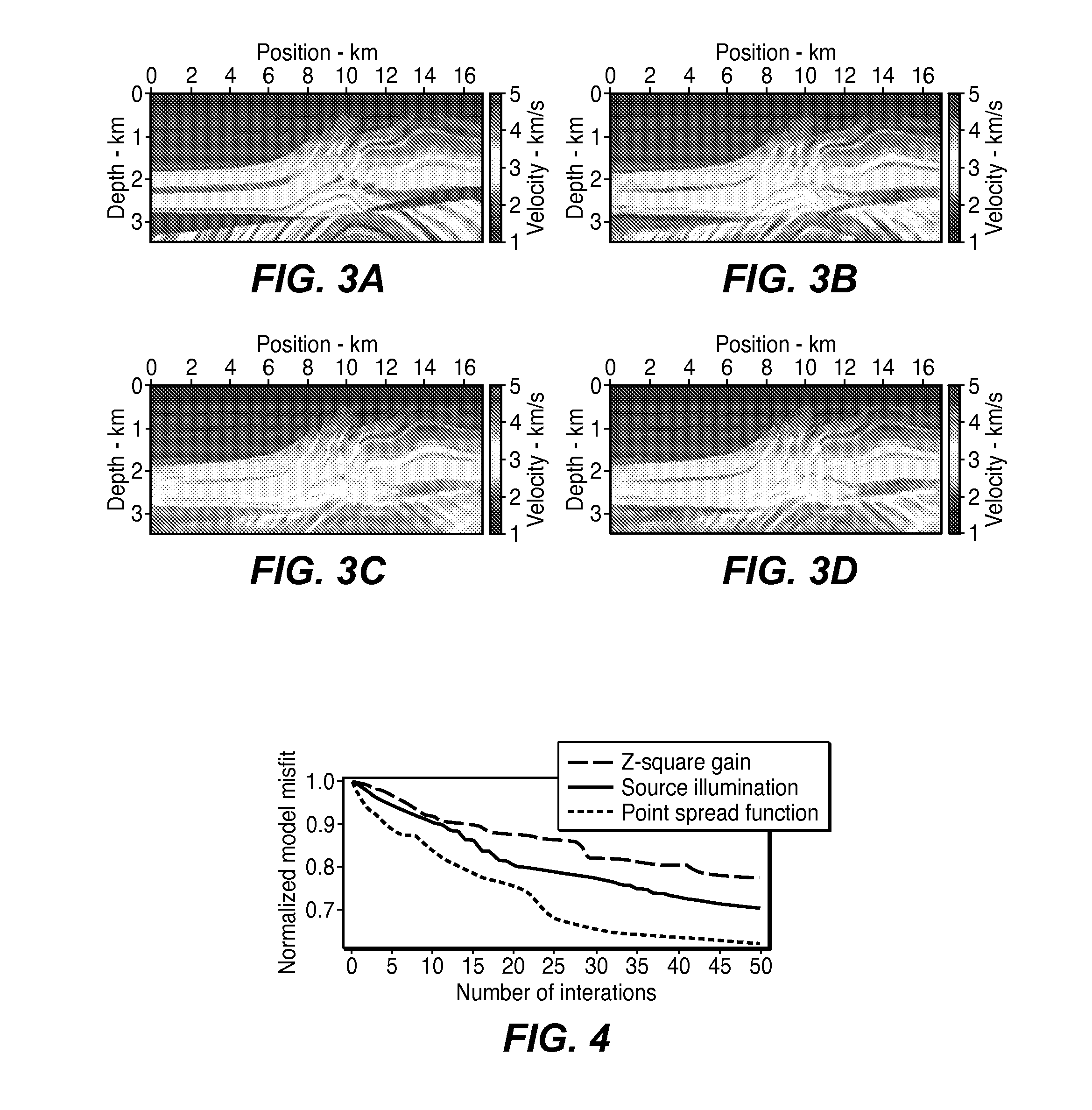Accelerating Full Wavefield Inversion with Nonstationary Point-Spread Functions
- Summary
- Abstract
- Description
- Claims
- Application Information
AI Technical Summary
Benefits of technology
Problems solved by technology
Method used
Image
Examples
numerical examples
[0057]FIG. 1B shows the corresponding PSFs obtained by computing the action of the Hessian to a vector containing isolated point diffractors (FIG. 1A) for the Marmousi model. FIG. 2A shows the raw gradient, and FIGS. 2B-2D are the preconditioned gradients obtained by inverting the Gauss-Newton equation using PSFs with different window sizes. Note that the wider the window size, the stronger the deconvolution effect, i.e., broader spatial frequency content, in the preconditioned gradients. FIG. 3 compares the inversion result using the Marmousi velocity model. Inversion preconditioned using the PSFs (i.e., the present inventive method) gives the fastest convergence rate (see FIG. 4) compared to conventional techniques for preconditioning, i.e., z-square gain of the gradient (scale the gradient by depth squares) and source illumination (the intensity of the source wavefields). It should be noted that the costs of the above three preconditioning schemes are about the same.
[0058]The win...
PUM
 Login to View More
Login to View More Abstract
Description
Claims
Application Information
 Login to View More
Login to View More - R&D
- Intellectual Property
- Life Sciences
- Materials
- Tech Scout
- Unparalleled Data Quality
- Higher Quality Content
- 60% Fewer Hallucinations
Browse by: Latest US Patents, China's latest patents, Technical Efficacy Thesaurus, Application Domain, Technology Topic, Popular Technical Reports.
© 2025 PatSnap. All rights reserved.Legal|Privacy policy|Modern Slavery Act Transparency Statement|Sitemap|About US| Contact US: help@patsnap.com



